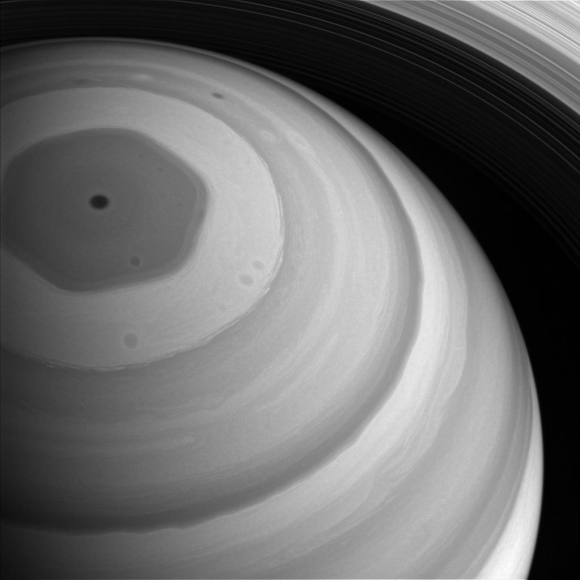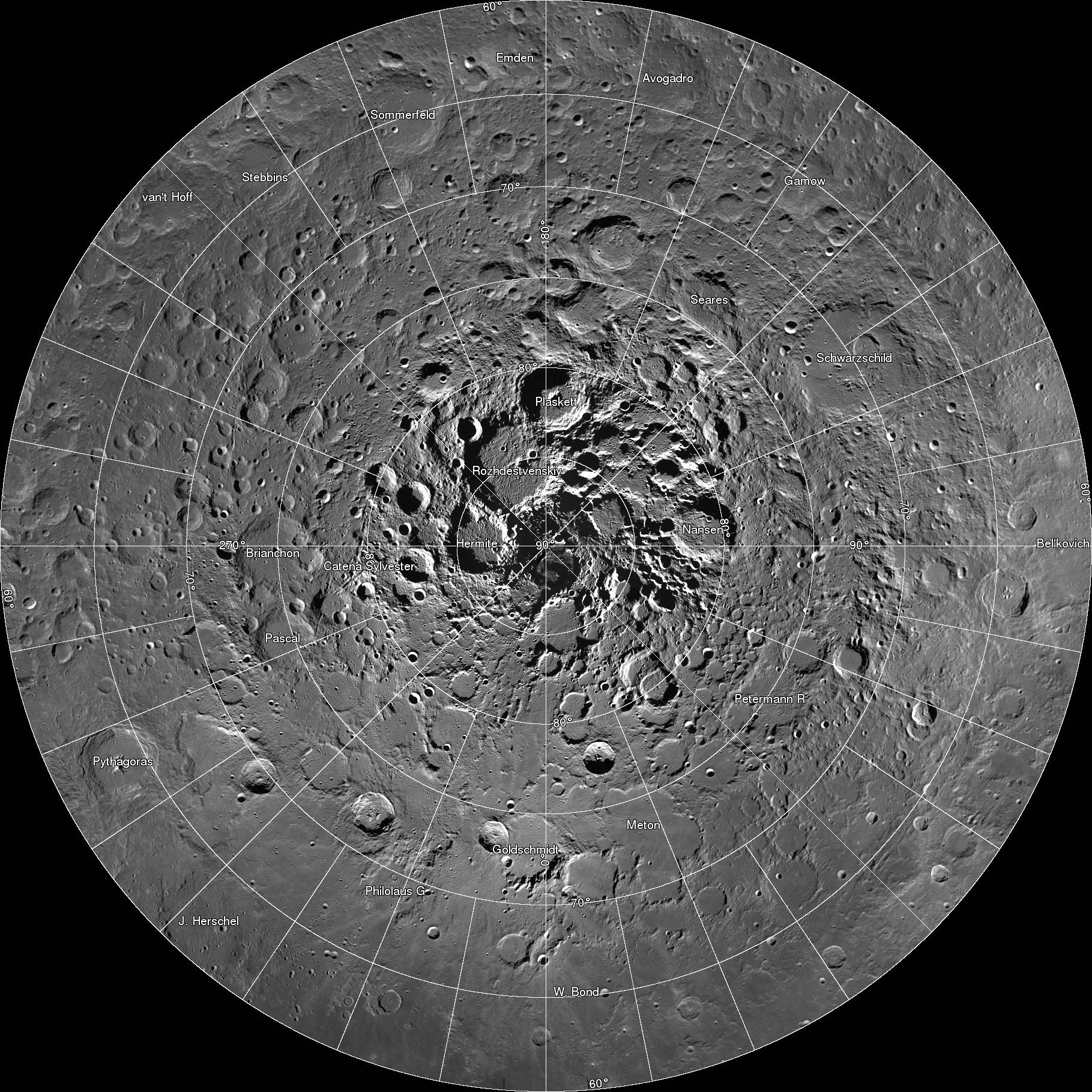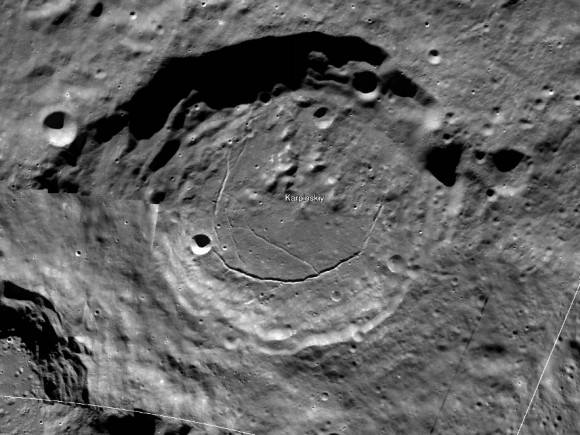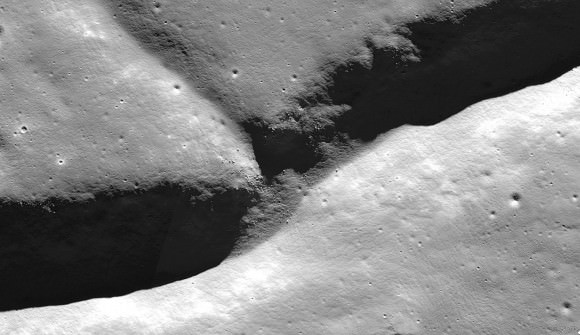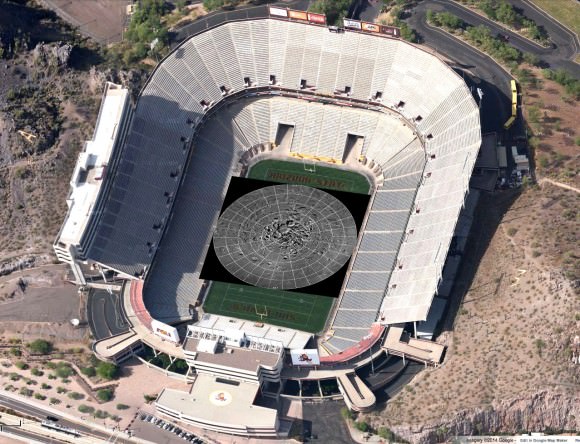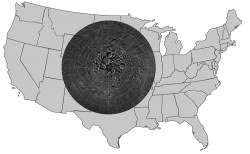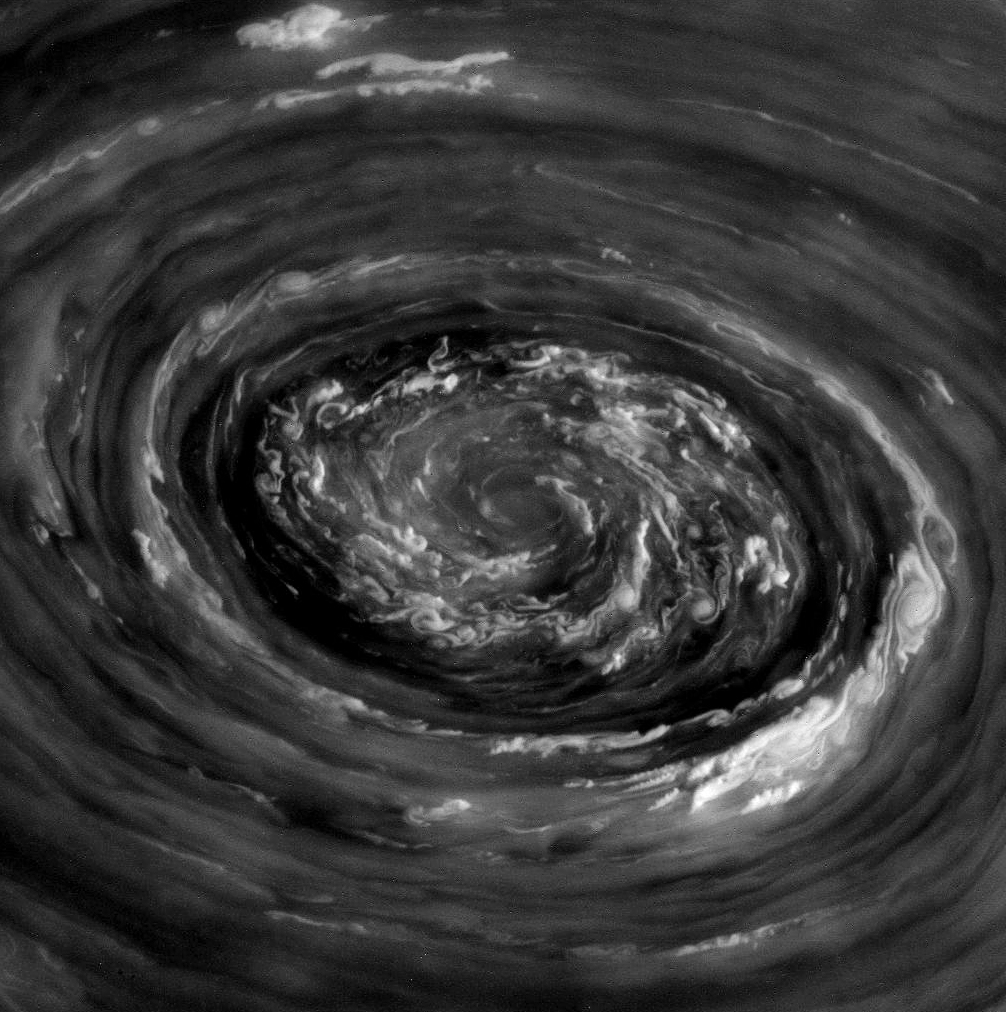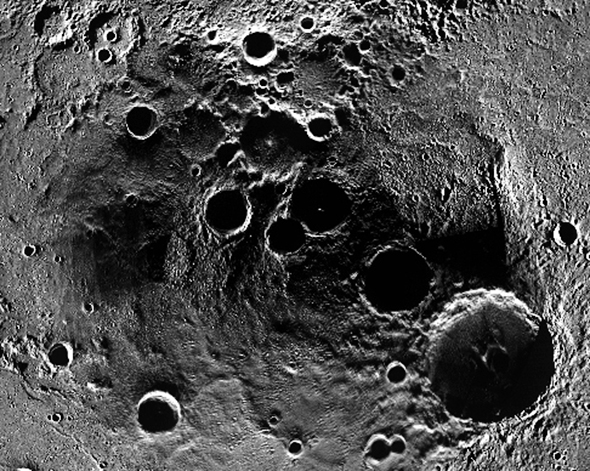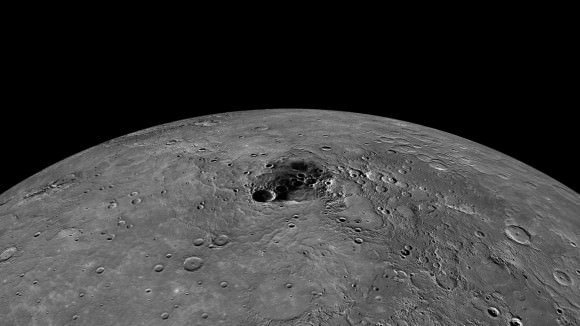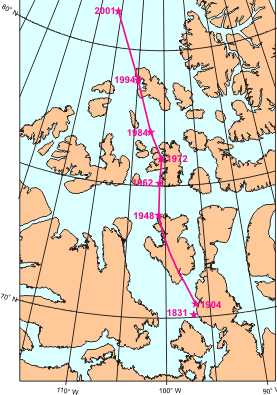Ok, are you ready for this?
I know… WOW.
This swirling maelstrom of clouds is what was seen over Saturn’s north pole earlier today, November 27, by NASA’s Cassini spacecraft. This is a raw image, acquired in polarized light, from a distance of 238,045 miles (383,097 kilometers)… all I did was remove some of the hot pixels that are commonly found on Cassini images taken with longer exposures.
Again… WOW.
My attempt at a color composite can be seen below, plus another treat:
It’s rough, and a little muddy because the clouds were moving between image channels (not to mention the blue channel image was rather underexposed) but here’s a color-composite of the same feature, made from images taken from a slightly different perspective:
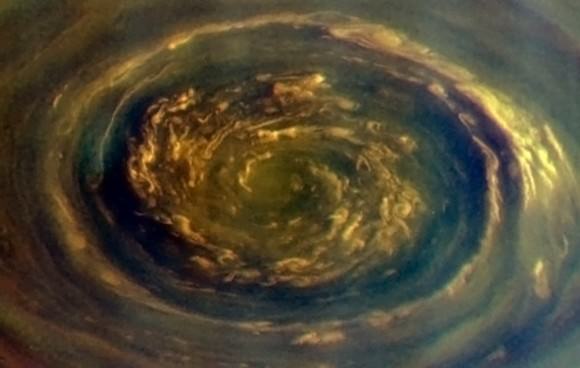
Color composite of Saturn’s north polar vortex
Pretty darn cool… Cassini does it yet again!
The images above show an approximately 3,000-4,000-km-wide cyclone above Saturn’s north pole. Saturn is also known to have a long-lived hexagonal jet stream feature around its north pole as well, but that is not shown in those images as it runs along a lower latitude. Instead, you can see that HERE:
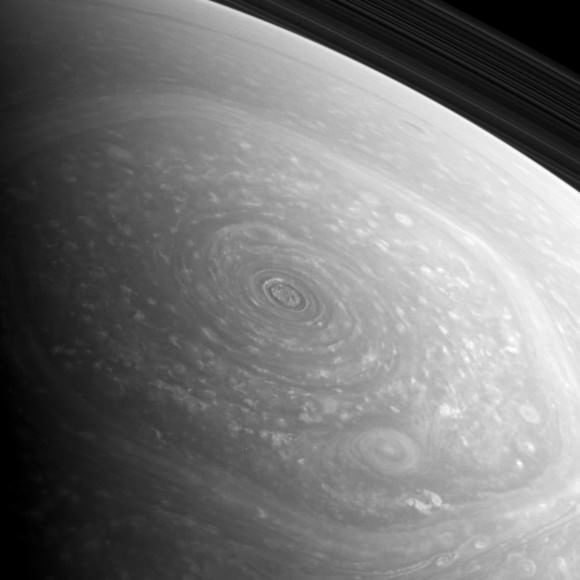
Saturn’s northern hexagon
Captured with a wider angle, in this image the hexagon structure can be made out as well as the cyclone, which sits at the center just over the pole. Saturn’s hexagon is about 25,000 km (15,500 miles) in diameter… large enough to fit almost four Earths inside. This image was also acquired today.
An RGB composite of this feature is below:
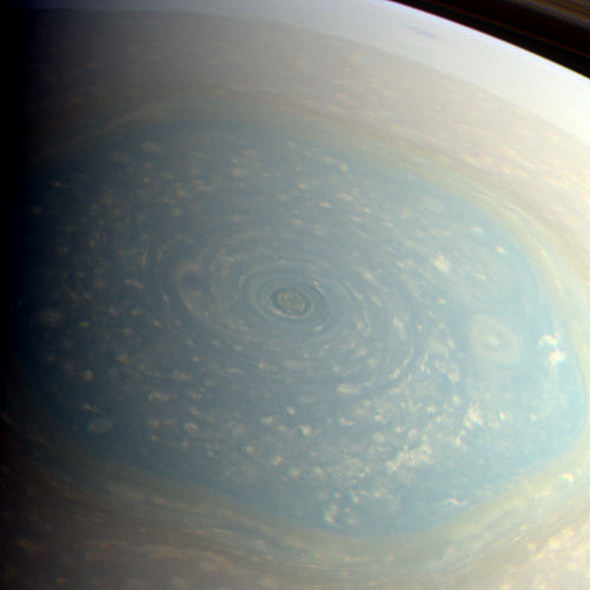
Saturn’s northern hexagon – color composite
It’s been a few years since we’ve gotten such a good look at Saturn’s north pole… thanks to Cassini’s new orbital trajectory, which is taking it high above the ring plane and poles of Saturn, we now have the opportunity to view the gas giant’s dynamic upper latitudes again. I’m sure this is just a taste of what’s to come!
(Image credit: NASA/JPL/Space Science Institute. Color composites by Jason Major)
